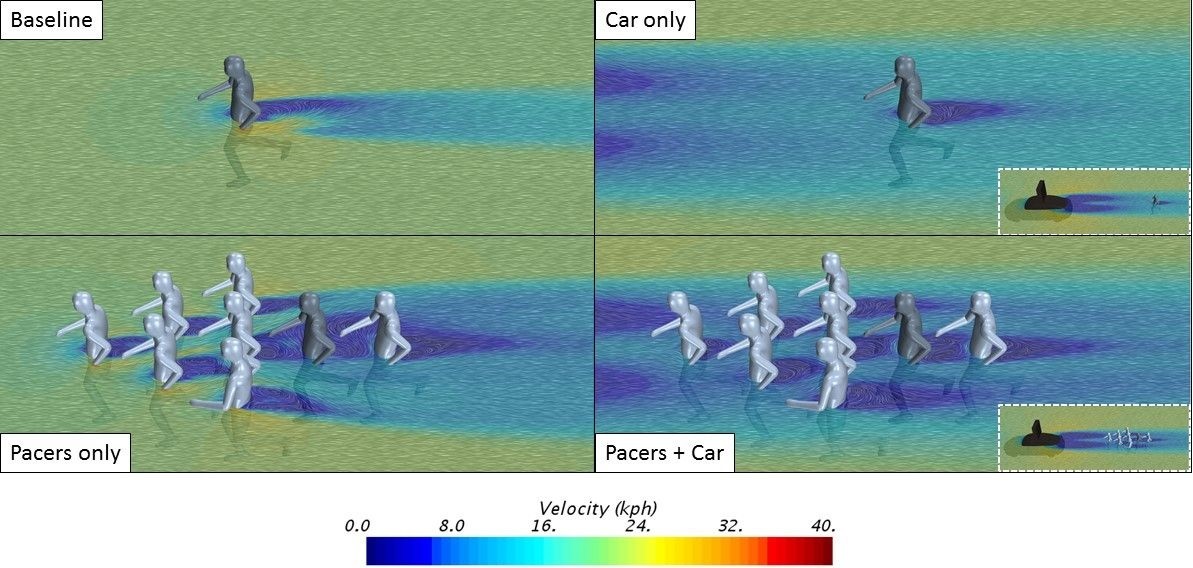The Aerodynamics of a Marathon World Record

In the early hours of Saturday, May 6, at the Monza motor racing circuit in Italy, Eliud Kipchoge ran 26.2 miles in 2 hours and 25 seconds, beating the existing marathon world record by 2 minutes and 32 seconds. The run was the culmination of Nike’s “Breaking 2” project, a two-year program aimed at demonstrating that it is physically possible for a human to run a marathon in less than two hours, a barrier which has achieved a mythical status similar to that of the “Four Minute Mile”.
For the attempt to be successful Kipchoge would have to run about 7 seconds faster per mile than world record holder Dennis Kimetto (who ran 2:02:57 in Berlin in 2014). Although on paper the performance increase of 2.5% required doesn’t sound too difficult, for runners operating at the very limit of human endurance, any gains would be very hard won. Many in the sports science community had predicted that the 2-hour barrier wouldn’t be broken for 50 years or more in regular competition.
Although Kipchoge ran much faster than the current world record, the Breaking 2 project deliberately employed a number of tactics that meant his time is not recognized as a legitimate world record, including reducing Kipchoge’s aerodynamic drag by allowing him to draft behind a Tesla pace-car and a team of pacers running in a “delta formation”.

In this blog (and in a subsequent article in Runners World), we speculated on how close Kipchoge could get to the marathon world record using legal conditions, by using Simcenter STAR-CCM+ simulations to isolate the various aerodynamic contributions. We came to the conclusion that: “if you could organize a group of pacemakers that were capable of running in close formation for most of the distance (instead of illegally relaying as in the Nike project), then you could probably get the legitimate world record close to 2:01:00”.

In yesterday’s Berlin marathon Eliud Kipchoge managed to smash the world record by 53 seconds with a 2:01:39 (a minute and fourteen seconds slower than his “illegal” Breaking2 run), an average pace of 4 mins 39s per mile. This is a remarkable time, especially since he managed to do this without using a consistent aerodynamic shield of pacers, which suggests that if he had a used the Breaking2 delta pacing for at least some of the race, he probably could have run quicker than two hours.

Of course, although perfectly legal, it would be very difficult to find and motivate enough elite marathon runners to hold a 4:39 minute per mile pace in support of another runner over a large portion of the marathon distance, which is probably why it will never happen.
Speculation aside, this demonstrates beyond any reasonable doubt that Kipchoge is the greatest ever marathon runner.


